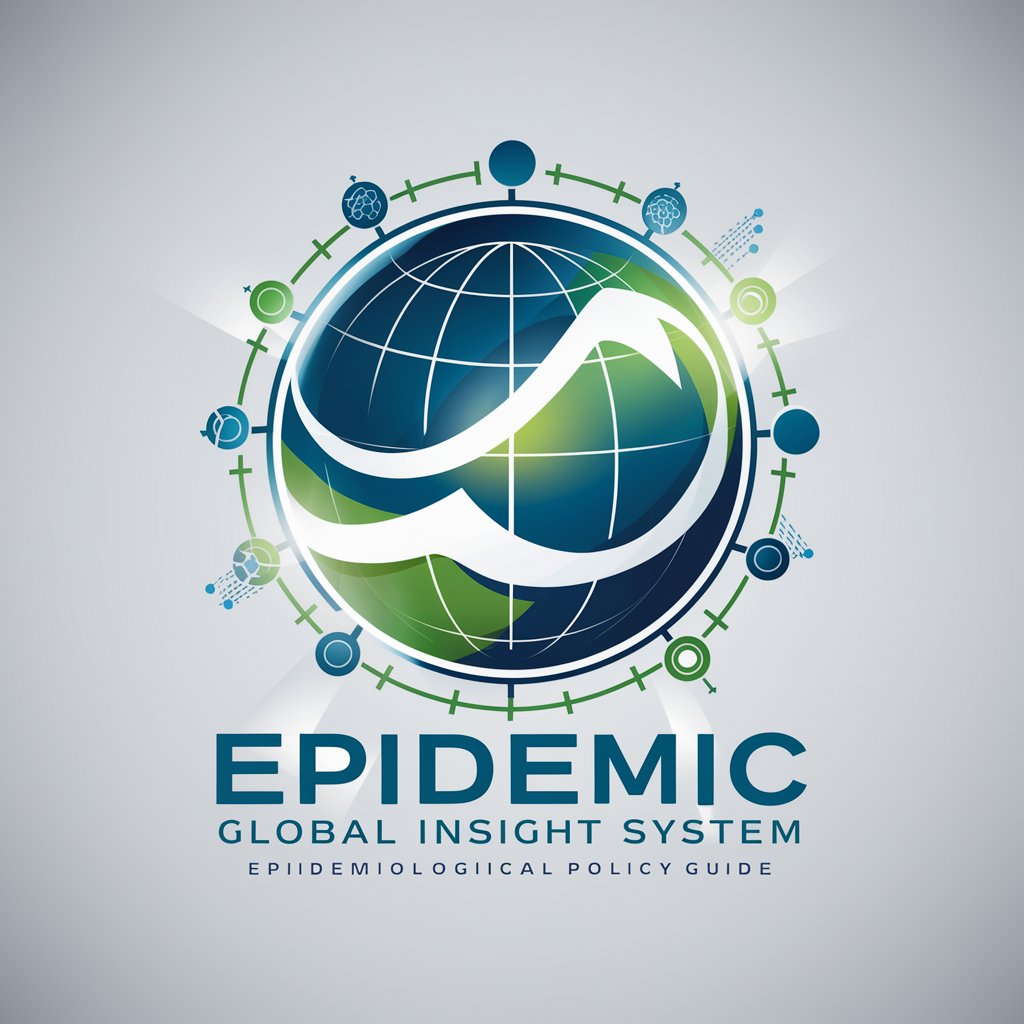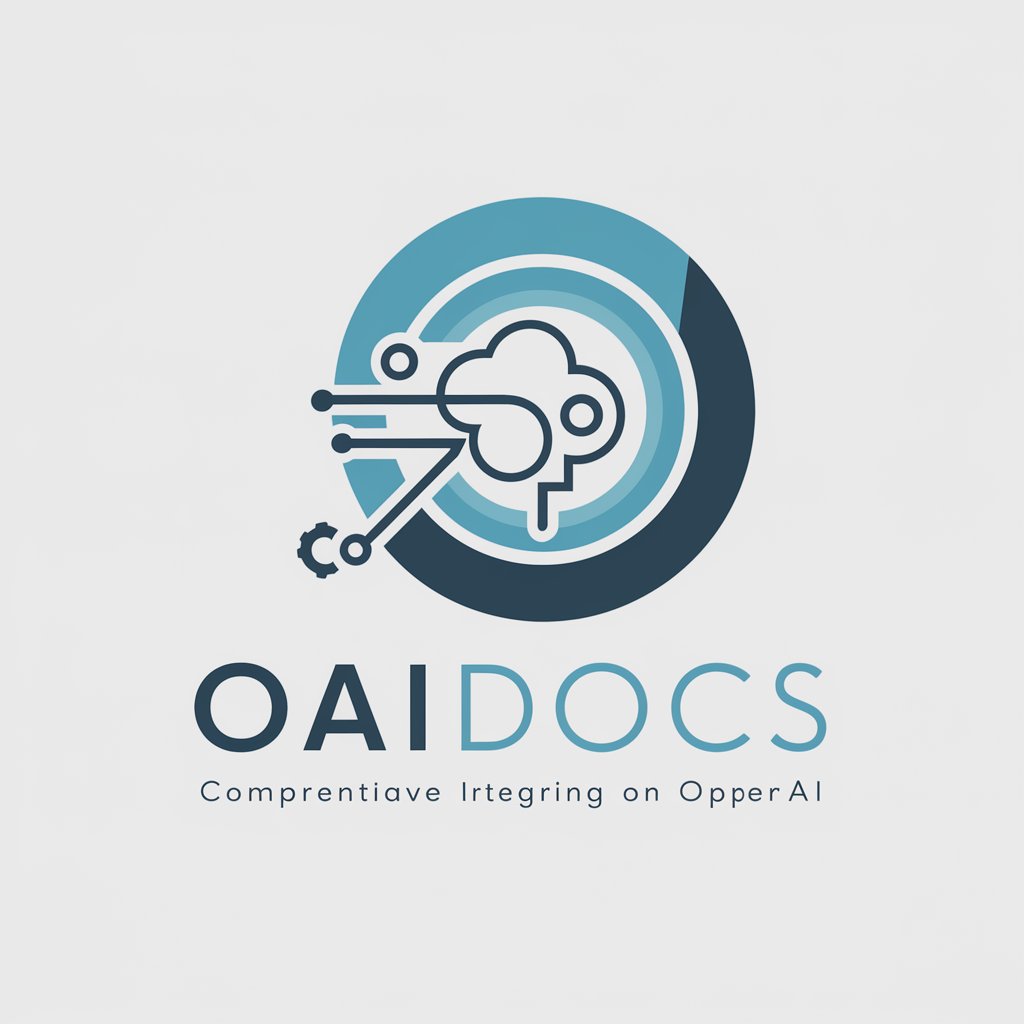Epidemic Global Insight System - AI-Powered Epidemic Insights

Welcome to Epidemic Global Insight System, your advanced epidemiological policy guide.
Empowering epidemic response with AI-driven insights
Analyze the impact of environmental factors on disease spread using integrated data from various sources.
Predict the next outbreak with our advanced AI and machine learning models.
Visualize real-time epidemiological data with interactive spatial tools.
Simulate health policy outcomes to optimize resource allocation and disease control.
Get Embed Code
Epidemic Global Insight System Overview
The Epidemic Global Insight System is designed as a comprehensive, advanced platform for monitoring, predicting, and managing epidemics and disease outbreaks. Its core purpose is to integrate diverse data sources, including social media, environmental datasets, and genomic databases, to provide a holistic view of health determinants. Through sophisticated AI and machine learning techniques, the system offers enhanced predictive modeling for forecasting disease outbreaks, identifying risk zones, and tracking disease progression over time. The platform includes interactive spatial data visualization tools, a customizable dashboard for policymakers, and collaborative features for joint analysis. It is built with accessibility in mind, ensuring compatibility with various assistive technologies, and includes educational resources for GIS tool usage. The system also features a real-time monitoring and alert mechanism for disease outbreaks, a policy simulation model for health policy planning, and maintains high standards of data security and privacy. An example scenario illustrating its use is during a flu epidemic, where the system could analyze social media trends, weather data, and flu virus genomic information to predict the outbreak's spread, enabling health authorities to allocate resources efficiently and issue timely public health advisories. Powered by ChatGPT-4o。

Core Functions of Epidemic Global Insight System
Predictive Modeling for Disease Outbreaks
Example
Using AI to analyze historical data and current trends to forecast future outbreaks, including identifying potential hotspots.
Scenario
Before the flu season, health officials use the system to predict which regions are most at risk, allowing for targeted vaccination campaigns.
Spatial Data Visualization
Example
Interactive maps showing disease spread in real-time, with tools for zooming into regions and adjusting parameters on-the-fly.
Scenario
During an Ebola outbreak, responders visualize the spread and concentration of cases to direct medical resources and set up treatment centers in critical areas.
Real-time Monitoring and Alerts
Example
Automatic notifications based on location and interest areas when an outbreak is detected or reaches a specified threshold.
Scenario
Public health authorities receive instant alerts when a new disease variant emerges in their jurisdiction, enabling rapid response planning.
Policy Simulation Models
Example
Simulating outcomes of various health policies to assist in planning and decision-making.
Scenario
Government policymakers simulate the effects of social distancing measures on COVID-19 spread, helping to decide on lockdown strategies.
Ideal Users of Epidemic Global Insight System
Public Health Authorities
This group benefits from the system's comprehensive monitoring and predictive capabilities to make informed decisions on outbreak management, resource allocation, and policy implementation.
Research and Academic Institutions
Researchers and students can utilize the system's extensive data integration and visualization tools for epidemiological studies, contributing to the academic body of knowledge on disease patterns and health determinants.
Healthcare Providers
Hospitals and clinics can use the system to prepare for potential surges in patient numbers during outbreaks, ensuring they have adequate resources and are implementing the most effective treatment protocols.
Policy Makers
They rely on the system's predictive modeling and policy simulation tools to draft, implement, and evaluate health policies, aiming to mitigate the impact of epidemics on public health and the economy.

How to Use Epidemic Global Insight System
Initiate Trial
Start by visiting yeschat.ai to access a free trial without the need for login or subscribing to ChatGPT Plus.
Explore Dashboard
Upon entry, navigate through the dashboard to familiarize yourself with various tools such as real-time monitoring, spatial data visualization, and policy simulation models.
Select Interest Areas
Define your interest areas by setting geographical preferences and topics of interest to receive customized alerts and insights.
Utilize Educational Resources
Take advantage of comprehensive training modules to enhance your understanding of GIS tools and best practices in epidemic monitoring.
Engage with Features
Experiment with the system’s predictive modeling, data manipulation tools, and collaboration features to maximize your insights into epidemic trends and policy implications.
Try other advanced and practical GPTs
AI Boomsma
Empowering your journey with AI-driven wellness insights.

The last culture critic
Revolutionizing Art Critique with AI

Mind Maven
Empowering Minds with AI-driven Psychology Insights

写真創造
Inspire your photography with AI

GPTBuilder
Crafting AI Solutions with Precision

Ema AI
Empowering You with AI-Driven Emotional Wisdom

MewCore Maven
Empowering Unity Developers with AI

Create Your Own Advisory Board
AI-powered insights at your fingertips.

PsychPy Builder ビルダー
Empower your research with AI-driven experiment design

Strategy consultant
AI-Powered Strategic Business Advisor

OAIDocs
Unleashing AI's knowledge, simply.

韦特塔罗占卜
Unlock Mysteries with AI-Powered Tarot

Frequently Asked Questions about Epidemic Global Insight System
What is the primary purpose of the Epidemic Global Insight System?
The system is designed to provide advanced epidemic monitoring and predictive analytics, enhancing decision-making for health policy planning and resource allocation through AI and machine learning techniques.
Can the system predict future disease outbreaks?
Yes, utilizing sophisticated AI models and integrating diverse data sources, the system can accurately forecast disease outbreaks, identify risk zones, and track disease progression over time.
How does the real-time monitoring feature work?
The real-time monitoring system leverages location-based alerts and updates on disease outbreaks, tailored to users' predefined interest areas, to provide timely and relevant information.
What types of data does the system integrate?
It integrates a wide range of data, including social media, environmental data, and genomic databases, to enrich analyses and offer a comprehensive view of health determinants.
How can policymakers benefit from using this tool?
Policymakers can leverage the tool’s policy simulation models to predict outcomes of health policies, access key indicators and trends through customizable dashboards, and make informed decisions to effectively manage epidemic responses.
